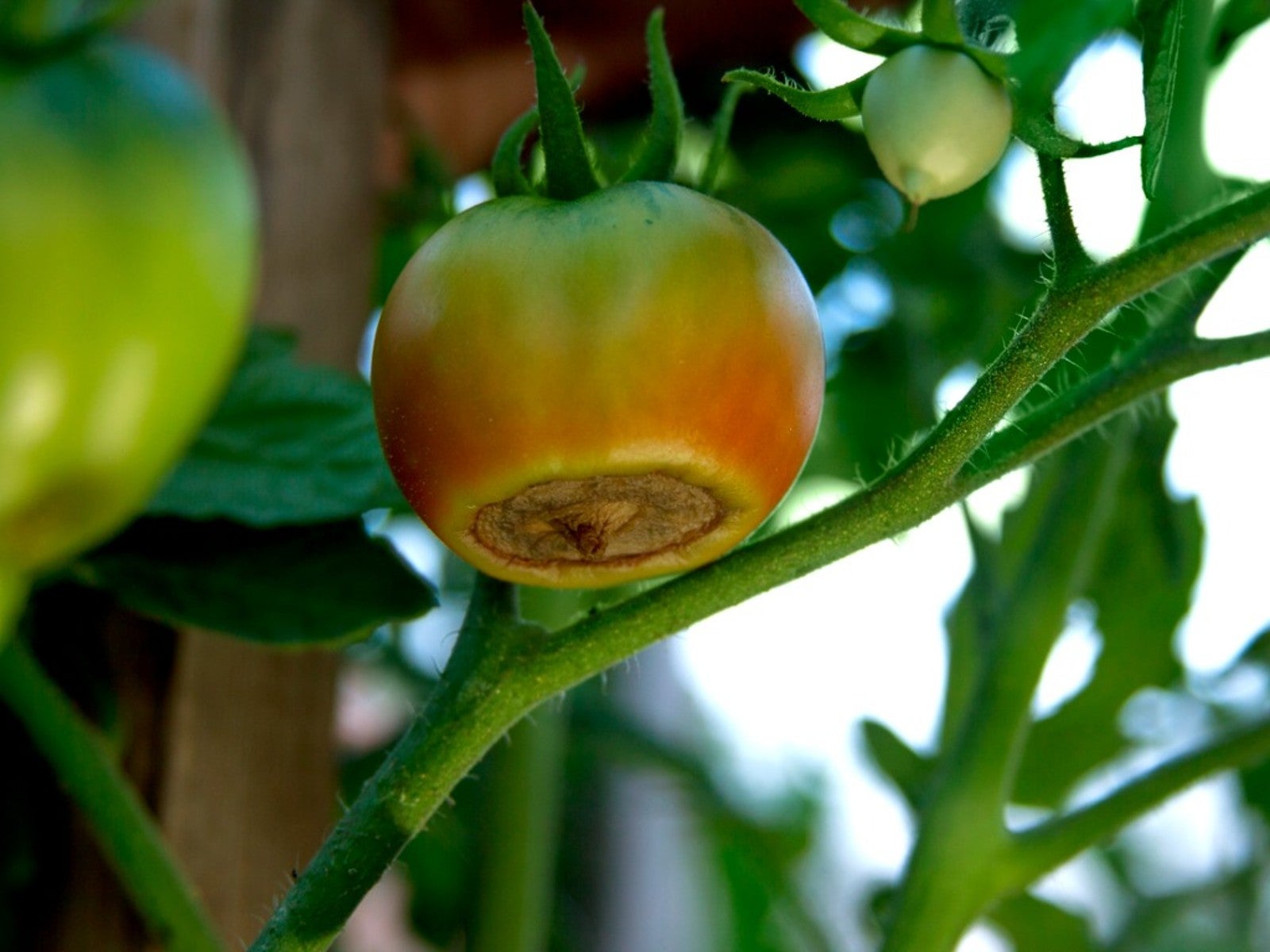Information On Common Tomato Plant Problems


Tomatoes are often considered to be among the easiest and most popular vegetables to grow in the home garden. But, while tomatoes are easy to grow, this doesn't mean you won't have tomato problems. Both novice and experienced gardeners may find themselves asking, “Why is my tomato plant dying?” Knowing the most common tomato growing problems will help you keep your tomato plants happy and healthy.
Tomato Plant Diseases
Perhaps the most common reason for tomato plant failure is disease. Tomato plants are susceptible to a wide variety of diseases. These include:
- Alternaria Canker - brown depressed spots on the leaves, fruit and stems
- Bacterial Canker - leaves wilt, turn yellow, then brown and die from the bottom up
- Bacterial Speck - small brown dots with yellow rings on fruit and leaves
- Bacterial Spot - wet, black spots on the leaves that eventually decompose and leave a hole
- Cucumber Mosaic Virus - the tomato plant will be stunted and will have thin leaves
- Early Blight - large black irregular shaped spots with yellow rings around them on the leaves
- Fusarium Crown Rot - whole plant turns brown, starting with mature leaves - brown lines can be found on the stems
- Fusarium Wilt - plants wilt despite proper watering
- Gray Leaf Spot - small brown spots on leaves that rot out and leave small holes in the leaves
- Late Blight - leaves turn pale brown and papery and the fruit develop indented spots
- Leaf Mold - light green or yellow spots on the undersides of the leaves that eventually cause whole leaves to turn yellow
- Powdery Mildew - leaves will be covered with a white powdery coating
- Septoria Leaf Spot - brown and grey spots on the leaves, mostly on older leaves
- Southern Blight - plant wilts and brown spots can be found on the stem near or at the soil line
- Spotted Wilt - Bulls-eye type spots on the leaves and the plant will be stunted
- Timber Rot - The tomato plants will have hollow stems and moldy spots on leaves and stems
- Tomato Tobacco Mosaic - The plant is stunted with patchy yellow and bright green leaves
- Verticillium Wilt - Plants wilt despite proper watering
Environmental Tomato Issues
While disease is a common reason for tomato plants dying, disease isn't the only thing that can kill tomato plants. Environmental issues, such as a lack of water, too much water, poor soil and too little light can also cause tomato plants to fail and die.
- Watering issues - When a tomato plant is under watered or over watered, it reacts the same way. It will develop yellow leaves and will look wilted. The best way to determine if you are under watering or over watering is to examine the soil. If it is dry, dusty and cracked, then it's likely your tomato plants aren't getting enough water. If, on the other hand, your tomato plants are in standing water or if the soil seems swampy, the plants may be over watered.
- Nutrient issues - Poor soil often leads to tomato plants with stunted growth and fewer low quality fruit. Plants in poor soil are lacking in nutrients and are unable to properly grow without these.
- Light issues - A lack of sun also can affect a tomato plant. Tomato plants need at least five hours of sun to survive. Less than this, and the plants will be stunted and eventually die.
Tomato Plant Pests
There are many garden pests that can damage or kill tomato plants. Typically, tomato pests will either attack the fruit or the leaves. Tomato pests that attack the leaves include:
- Aphids
- Blister beetles
- Cabbage loopers
- Colorado potato bug
- Flea beetles
- Leafminers
- Stink bugs
- Thrips
- Tomato hornworms
- Whiteflies
Tomato pests that can damage fruit are:
Diagnosing these problems will help you learn how to save a dying tomato plant. Remember, tomato growing problems are actually rather common and not all are fatal. For example, tomato megablooms or fasciated flowers can look alarming at first, but they don't cause any harm to the plant. Even gardeners with years of experience can find that their tomato plants have been killed by disease or pests.
Sign up for the Gardening Know How newsletter today and receive a free copy of our e-book "How to Grow Delicious Tomatoes".

Heather Rhoades founded Gardening Know How in 2007. She holds degrees from Cleveland State University and Northern Kentucky University. She is an avid gardener with a passion for community, and is a recipient of the Master Gardeners of Ohio Lifetime Achievement Award.